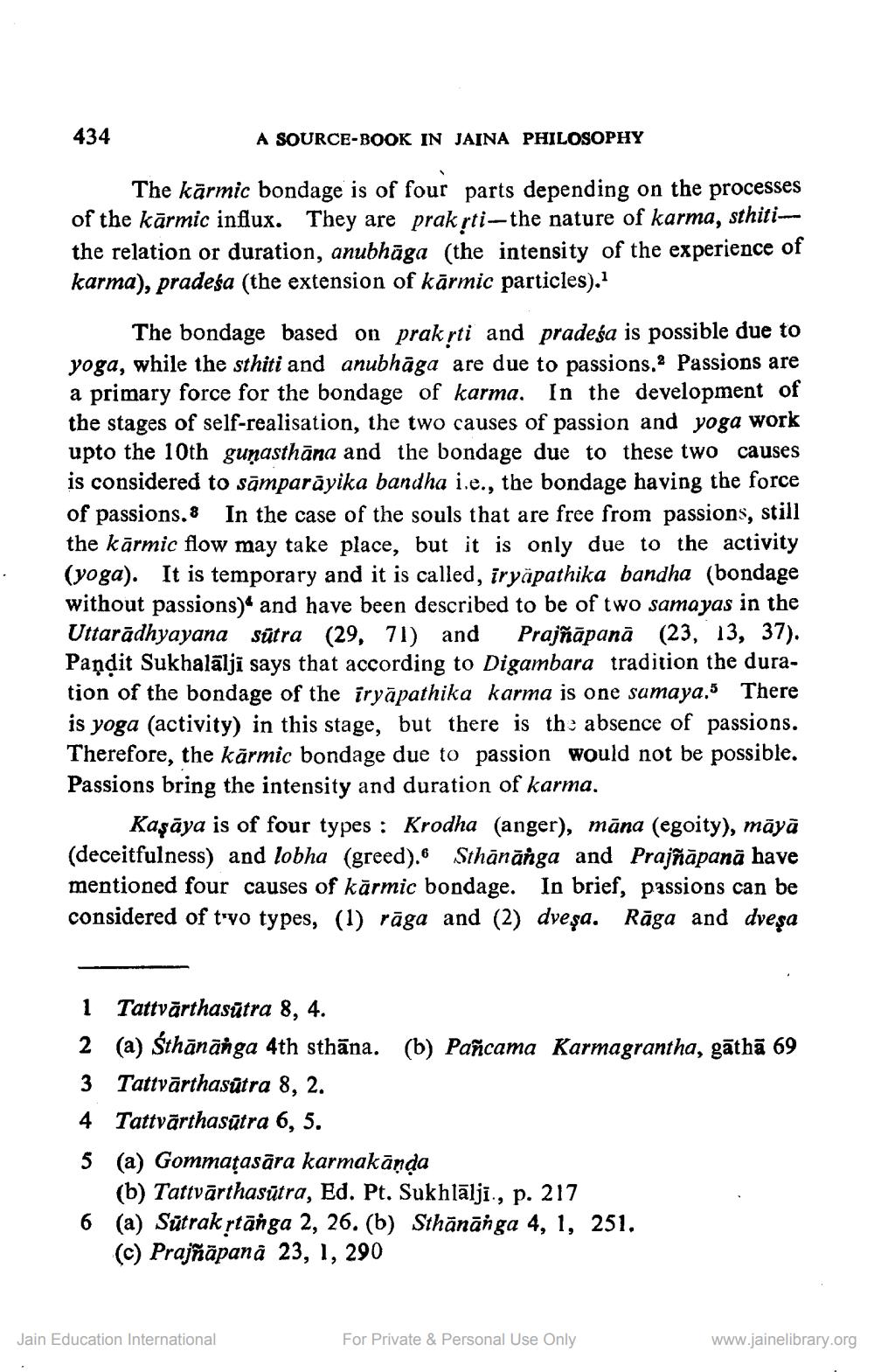________________
434
A SOURCE-BOOK IN JAINA PHILOSOPHY
The kārmic bondage is of four parts depending on the processes of the kārmic influx. They are prakrti—the nature of karma, sthitithe relation or duration, anubhāga (the intensity of the experience of karma), pradesa (the extension of kārmic particles).
The bondage based on prakrti and pradeśa is possible due to yoga, while the sthiti and anubhāga are due to passions.2 Passions are a primary force for the bondage of karma. In the development of the stages of self-realisation, the two causes of passion and yoga work upto the 10th gunasthāna and the bondage due to these two causes is considered to sāmparāyika bandha i.e., the bondage having the force of passions.8 In the case of the souls that are free from passions, still the kārmic flow may take place, but it is only due to the activity (yoga). It is temporary and it is called, iryäpathika bandha (bondage without passions and have been described to be of two sama yas in the Uttarādhyayana sütra (29, 71) and Prajñāpanā (23, 13, 37). Pandit Sukhalälji says that according to Digambara tradition the duration of the bondage of the iryāpathika karma is one sumaya. There is yoga (activity) in this stage, but there is the absence of passions. Therefore, the kārmic bondage due to passion would not be possible. Passions bring the intensity and duration of karma.
Kaşāya is of four types : Krodha (anger), māna (egoity), māyā (deceitfulness) and lobha (greed). Sthānānga and Prajñāpanā have mentioned four causes of kārmic bondage. In brief, passions can be considered of trvo types, (1) rāga and (2) dveşa. Rāga and dveşa
1 Tattvārthasūtra 8, 4. 2 (a) Śthānānga 4th sthāna. (b) Pañcama Karmagrantha, gāthā 69 3 Tattvārthasūtra 8, 2. 4 Tattvārthasūtra 6, 5. 5 (a) Gommațasāra karmakānda
(b) Tattvārthasūtra, Ed. Pt. Sukhlālji., p. 217 6 (a) Sūtrak stānga 2, 26. (b) Sthānānga 4, 1, 251.
(c) Prañāpana 23, 1, 290
Jain Education International
For Private & Personal Use Only
www.jainelibrary.org




